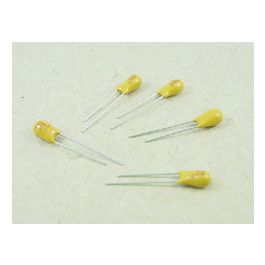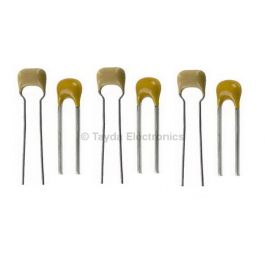You'll find it's a can of worms down this path.
In this arena, we'll mostly be using aluminum electrolytics, tantalums, ceramics, and films as broad categories.
Tantalums and aluminum electrolytics tend to be polarized, meaning, don't apply voltage the wrong way or poof. You've got a marshmallow capacitor. Or a dead short if it's a tantalum.
Though some electrolytics are bipolar: they'll typically be labeled as "NP" OR "BP". There's also "audio quality" electrolytics...Nichicon UKZ and UFG, Elna Silmics...I'll use those adjacent to the signal path. Anything that has to do with power filtering gets a low impedance, high reliability electrolytic (UHE, UPM, UPW)
Those types will be your go-tos starting in the 1uF range on up, but you can still find films usable up to around 4.7ish. I tend to avoid tantalums if at all possible...
Ceramic caps...it depends on the application. C0G dielectrics are exceptionally good, x7r dielectrics...not so much but their small form factor is useful in certain applications. Anything else...eh...I usually toss 'em. But I'm probably a little snobby in that regard.
Film caps...woof. There's a lot. Polyester, or mylar, or PET film capacitors tend to be bottom barrel for film caps. They serve a definite purpose, though, because they're relatively small and cheapish.
Polypropylene film is my go-to film dialectric. Values up to 22nf tend to be very compact, they're not too terribly expensive, and there's a bunch of technical stuff about their performance as a dialectric that I'm not knowledgeable enough to explain...
Polystyrene films are great...typically only available in smaller values and mostly in axial lead formats. I have a few of multiple values on hand just in case I need em in a sensitive spot, like a S&H circuit. They're very easy to fry with excessive heat though.
Polycarbonate film and PPS film tend to occupy a similar space, better than polyester, polypro typically preferred in sensitive to locations. Polycarbs aren't really made anymore, but can still be had from time to time. PPS is often seen as new production replacement for polycarb, and can be had in values up to 1uF as far as I've seen. I'll use those along the audio path as long as space allows...they are larger than polyester, but smaller than polypro.
do any of these categories really make a difference? Hell, I dunno. Best to just build and tweak and experiment I say. I will say that I find real joy in hunting down locations where I can replace a 1UF poly input or output cap with the same value in PPS. Probably just cause I like to throw money in sinks.
But that's part of the fun...figuring out what will fit where doing what job with what characteristics at what price point. Just don't buy any crazy snake oil and paper caps with colloidal silver leads...
Happy building!


 www.taydaelectronics.com
www.taydaelectronics.com



